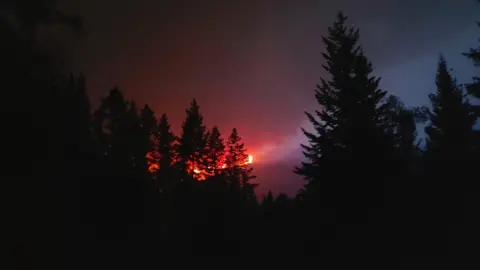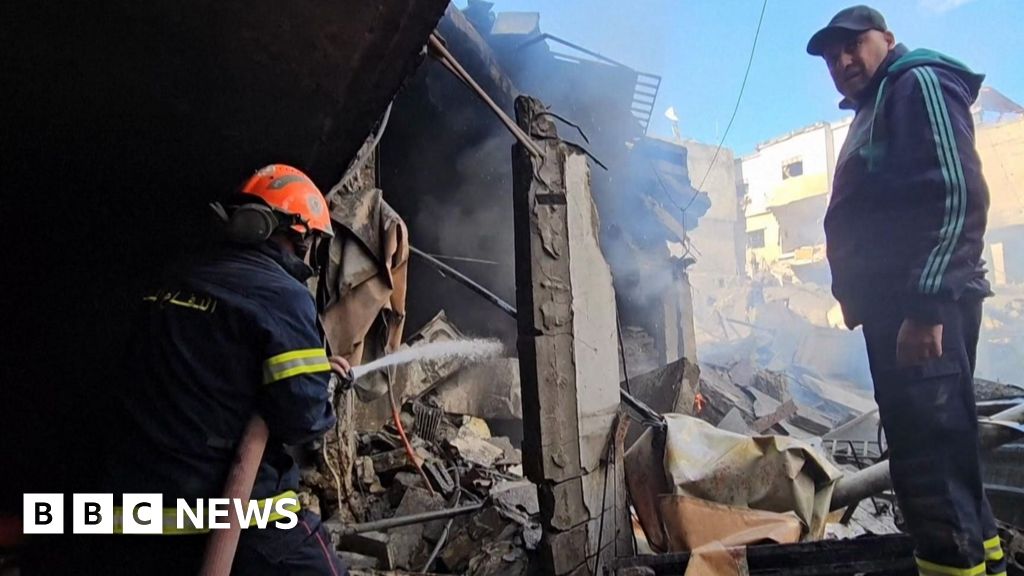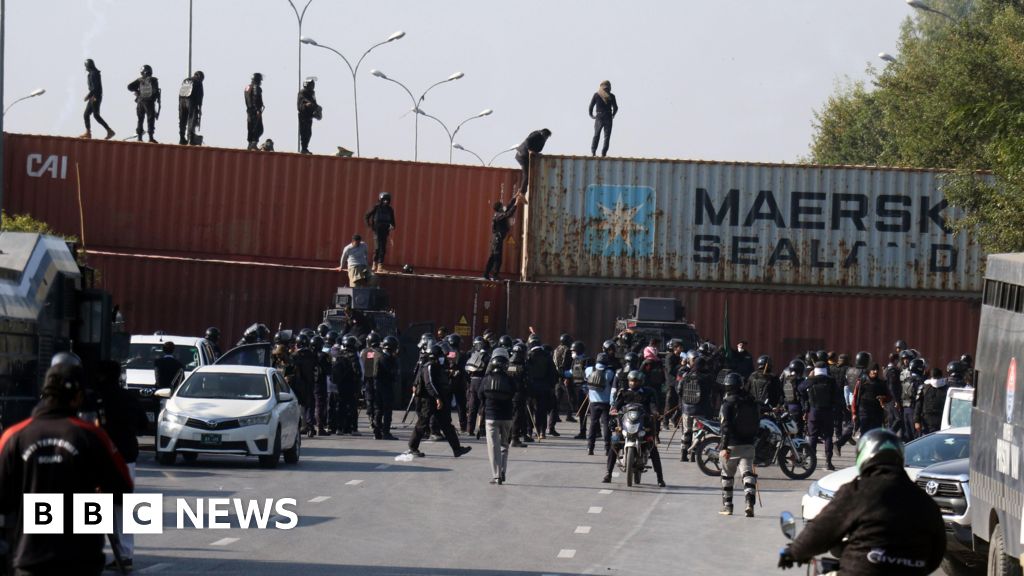ARTICLE AD BOX
Driver films destruction in Jasper after wildfire blazes through town
A Canadian resort town has been devastated by a raging wildfire that officials say may have destroyed 30 to 50% of the municipality.
The fires in Jasper National Park, which were sparked earlier this week, forced about 25,000 people to flee the area earlier this week, officials said on Thursday.
Some 400 firefighters from around the world are on their way to Canada to help battle the flames.
Officials warned that there are only limited details currently available on which structures were damaged, and that the focus is on containing the flames and preventing further destruction.
Still, Alberta Premier Danielle Smith said during an emotional press conference that the township of Jasper will require a "significant rebuild".
Jasper's mayor, Richard Ireland, said that the wildfire has "ravaged our small, tight-knit mountain community".
"To all of the responders on the ground in the town [and] in our home, words cannot express the admiration and the gratitude I have for your professionalism, dedication and their unyielding efforts."
He said his town is still coming to term with the wildfire.
Jasper National Park is the largest national park in the Canadian Rockies. The famous Rockies resort town of Jasper has about 5,000 residents, but the park had almost 2.5 million visitors last year.
Hundreds of firefighters are flying in to help with the efforts, including 100 firefighters from Jalisco, Mexico, 200 from South Africa and 100 from Australia and New Zealand.
Canadian Prime Minister Justin Trudeau turned to social media to thank first responders for their response to the wildfires.
"As the heartbreaking images from Jasper emerge, I want to thank the brave first responders who are in Alberta right now, fighting to save every home and every community they can," he posted.
Pierre Martel, director for the national fire management programme at Parks Canada, said the fire was started by a lightning storm and escalated on Wednesday, fanned by powerful wind gusts.
"It [was] just a monster at that point," Mr Martel said. "There are no tools we have in our tool box to deal with it"
The fire reached 100m (328ft) high, covering "an inordinate amount of space in a very little amount of time," one official said.

 Jasper National Park
Jasper National Park
Mike Ellis, Alberta's minister for public safety, said the fire was 5km (3 miles) outside of Jasper when it was pushed by a powerful wind gust to the town in "less than 30 minutes".
"Any firefighter will tell you there is little to nothing you can do when you have a wall of flames coming at you like that," he said.
"Nobody anticipated that fire to come so fast, so large and so quickly."
BBC journalist Wendy Hurrell was in Jasper National park with her husband and daughter when the fires began to burn on Monday.
She drove through the night in a rush to leave town.
"The storm was ferocious - the skies went dark red and there were whipping winds, fierce rain and lightning," she said.
"We are some of the last travellers to see Jasper in its full beauty - it will be a very long time before it will recover. It's utterly devastating for them all and my heart is breaking."

 Wendy Hurrell
Wendy Hurrell
Wendy Hurrell captured images of the flames as she and her family left the park
Environment Canada said there might soon be a reprieve from the hot and dry weather, which allowed the fire to grow, as 1cm to 2cm (0.4in to 0.8in) of rain is expected on Thursday.
This marks another year of difficult fire conditions for the province. Last year, some 2.2 million hectares burned in Alberta between 1 March and 31 October.
The area burned during those wildfires was record breaking, officials said.
Outside Alberta, fires are burning in California and Utah.
Scientists have longed pointed to human-led climate change as the cause of worsening natural disasters including wildfires.
With additional reporting from Nadine Yousef and Ottilie Mitchell

 4 months ago
14
4 months ago
14








 English (US)
English (US)